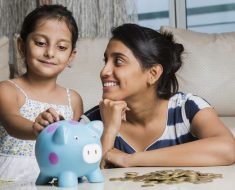Independence Day 2018: Books are a great way to get children interested in learning about the country, its culture, history and the people who make it what it is. Here is a reading list for your kids…and you!
Ahimsa by Supriya Kelkar
The story takes place in the pre-Independence era. Little Anjali loves her gorgeous collection of ghagra cholis and playing with her best-friend Irfaan. One day, caught up in patriotic fervor, the two paint a large ‘Q’ (for Quit India) which takes them on a chase through the Untouchables colony, in hot pursuit by the Brit officer whose bungalow wall they defaced. This forms the foundation for a story where Anjali discovers that her mother has joined the hallowed ranks of freedom fighters and everything that she took for granted, is about to change. She even has to give up her gorgeous clothes for homespun khadi. Follow Anjali on her journey and find out if one girl can make a difference in the destiny of a nation. The book, published by Scholastic, is inspired by the author’s great-grandmother’s experience working with Gandhi.
Like A Girl: Real Stories for Tough Girls by Aparna Jain
Behaving like a girl usually means being seen more than being heard. The book profiles gutsy women who changed India and the world. Read about Sultan Razia, Rani Lakshmibai and Chand Bibi from history, rebels like Amrita Shergil, leaders like Indira Priyadarshini Gandhi and modern icons such as Snia Mirza, Saina Nehwal and Dipa Karmakar. Published by Westland Books, the book’s 51 profiles stand out for the honest, no-holds barred approach without diluting the hard facts of the narrative.
We, The Children of India: The Preamble to Our Constitution by Leela Seth
This is a book that can be read aloud to a really young child, with each page explaining the preamble to our Constitution in simple terms. Sample this: What then is a constitution? It is a book that contains the ideas, rules, promises and duties agreed to by the people of a country. It can be changed from time to time if the citizens feel that it is necessary. But usually, because it is the most important law of a country, this cannot be done too easily.” Published by Puffin, this book by the late former Chief Justice Leela Seth, illustrated by Bindia Thapar, is a must for any bookshelf.
The Incredible History of India’s Geography by Sanjeev Sanyal and Sowmya Rajendran
Sanjeev Sanyal’s Land of the Seven Rivers was a popular read for adults and this edition is a retelling for younger readers. It’s also filled with amazing trivia. Did you know this one? “After his great victory at Plassey, Robert Clive did not offer thanksgiving at a church. He did it at a Durga Puja organised by Nabakrishna Deb in Kolkata!” Here’s another nugget on the Everest: “In 1849, the highest mountain in the world was discovered. It was more than 29,000 feet high! This mountain, Peak XV, was called Chomolungma or Mother Goddess of the World by the Tibetans. The Survey of India usually retained the local names for places wherever possible but not this time. The highest mountain in the world was renamed after George Everest. Yes, Peak XV is Mountain Everest.” If your kids are not fond of geography, they’re sure to develop an affinity now. Published by Penguin Books, if your kids are not fond of geography, they’re sure to develop an affinity after reading this one.
Let’s Go Time Travelling: Life in India Through the Ages by Subhadra Sen Gupta
Can history be fun? Well, this book certainly makes sure it is, with unique information and weird trivia about our ancient civilisations and culture. Find out if they designed jewellery in Harappa and if King Ashoka was fond of chewing paan. For instance, did you know that if you lived in the Indus Valley, you coild quite easily get lost, since all the cities looked the same? “Honestly, I’m not making this up! All the cities were made using bricks that were exactly the same size. The streets were laid out in straight lines at right angles in an identical grid and the houses had the same design. You had two main streets, one running from north to south and another from east to west, and they were as wide as our three-lane highways.” Published by Penguin India, it’s delightfully illustrated by Tapas Guha.
Source: Read Full Article





